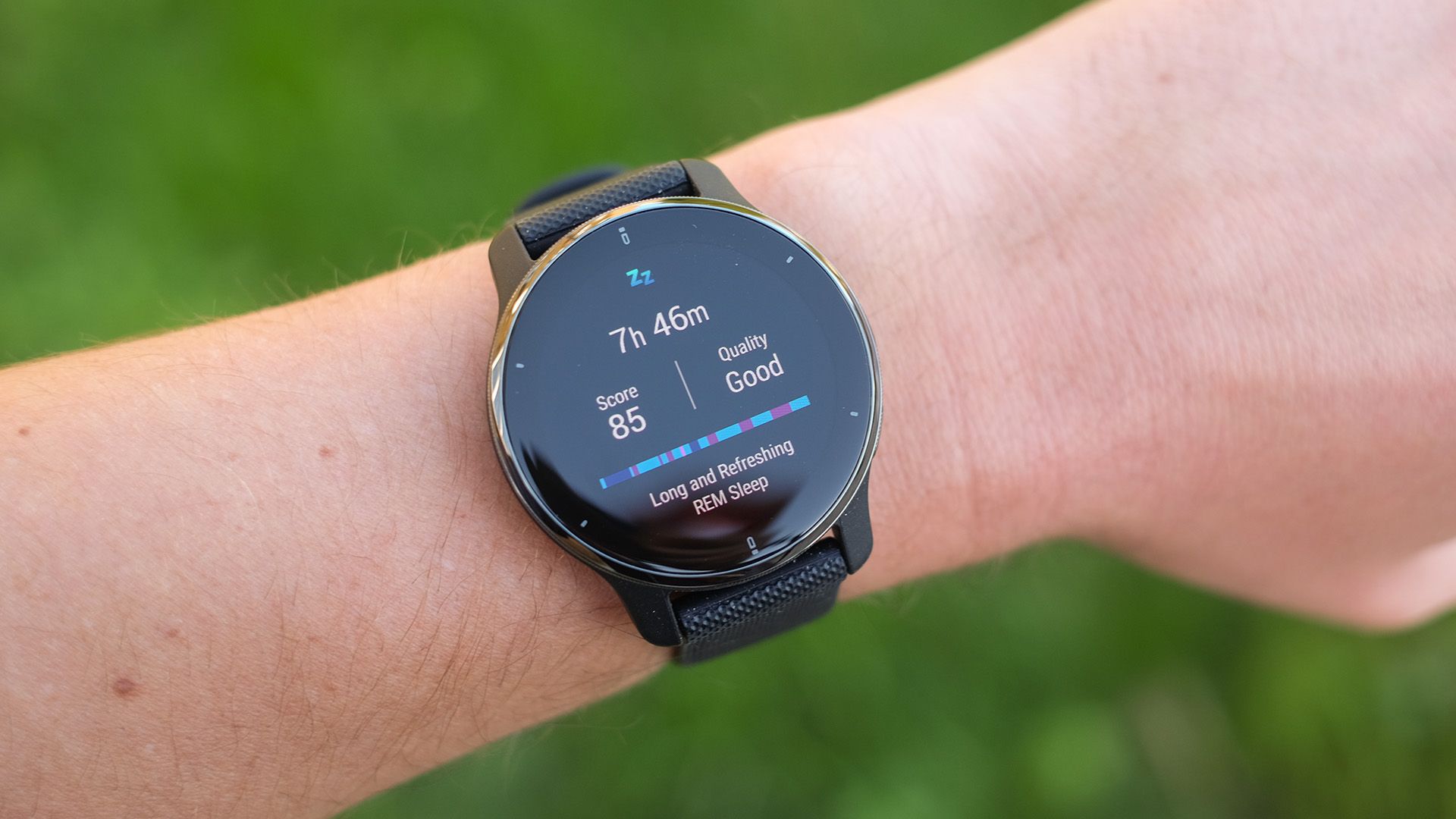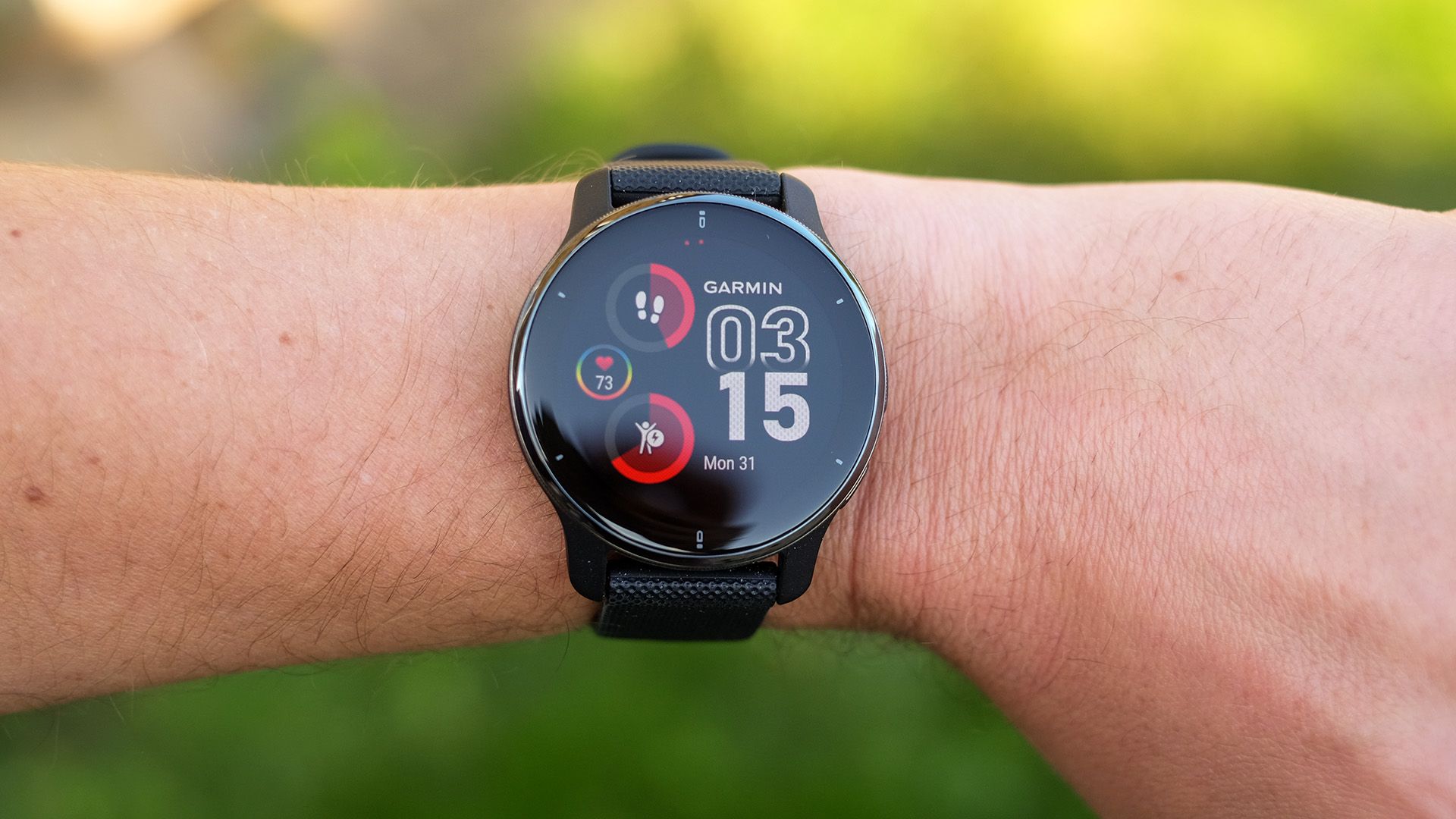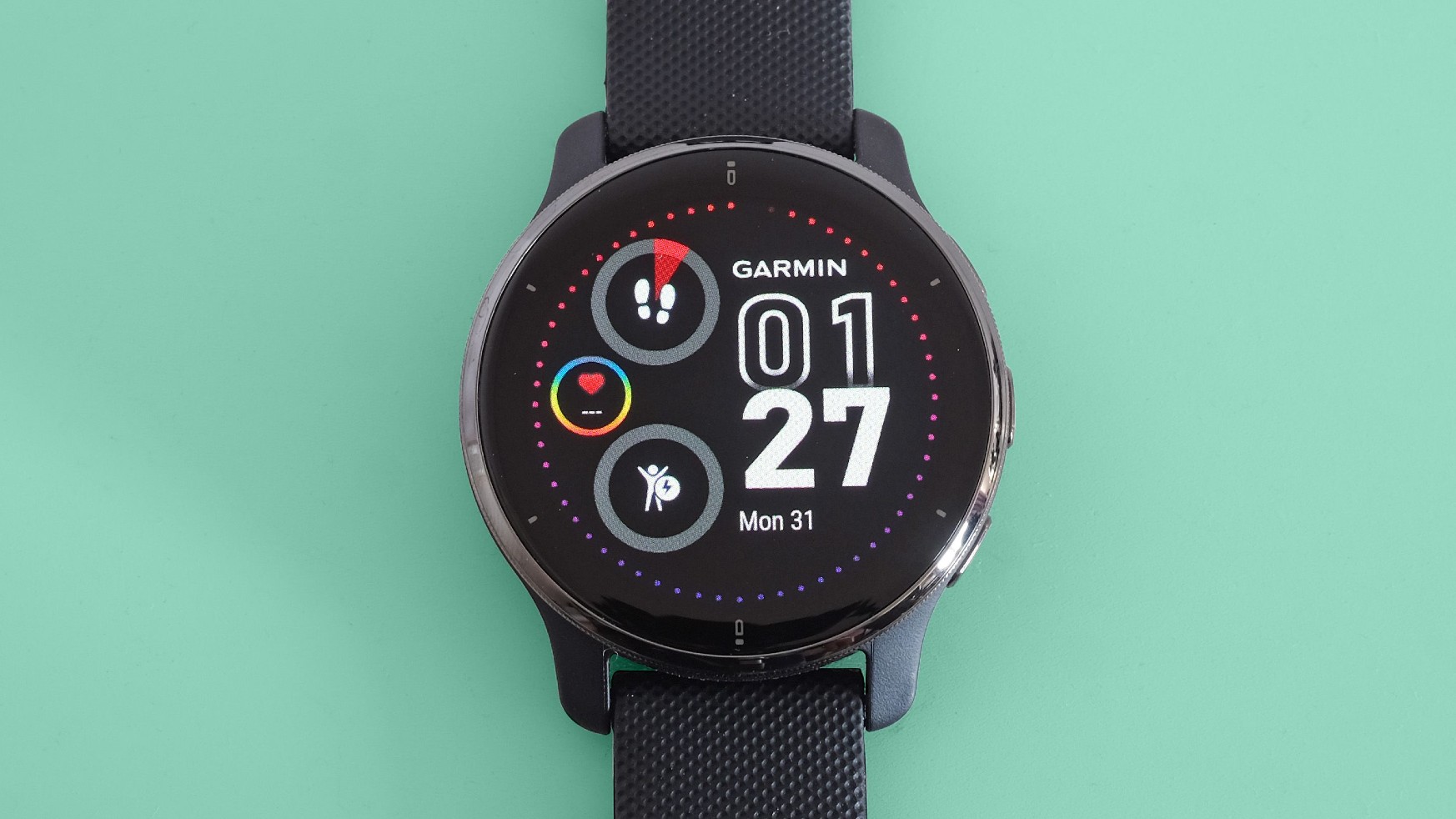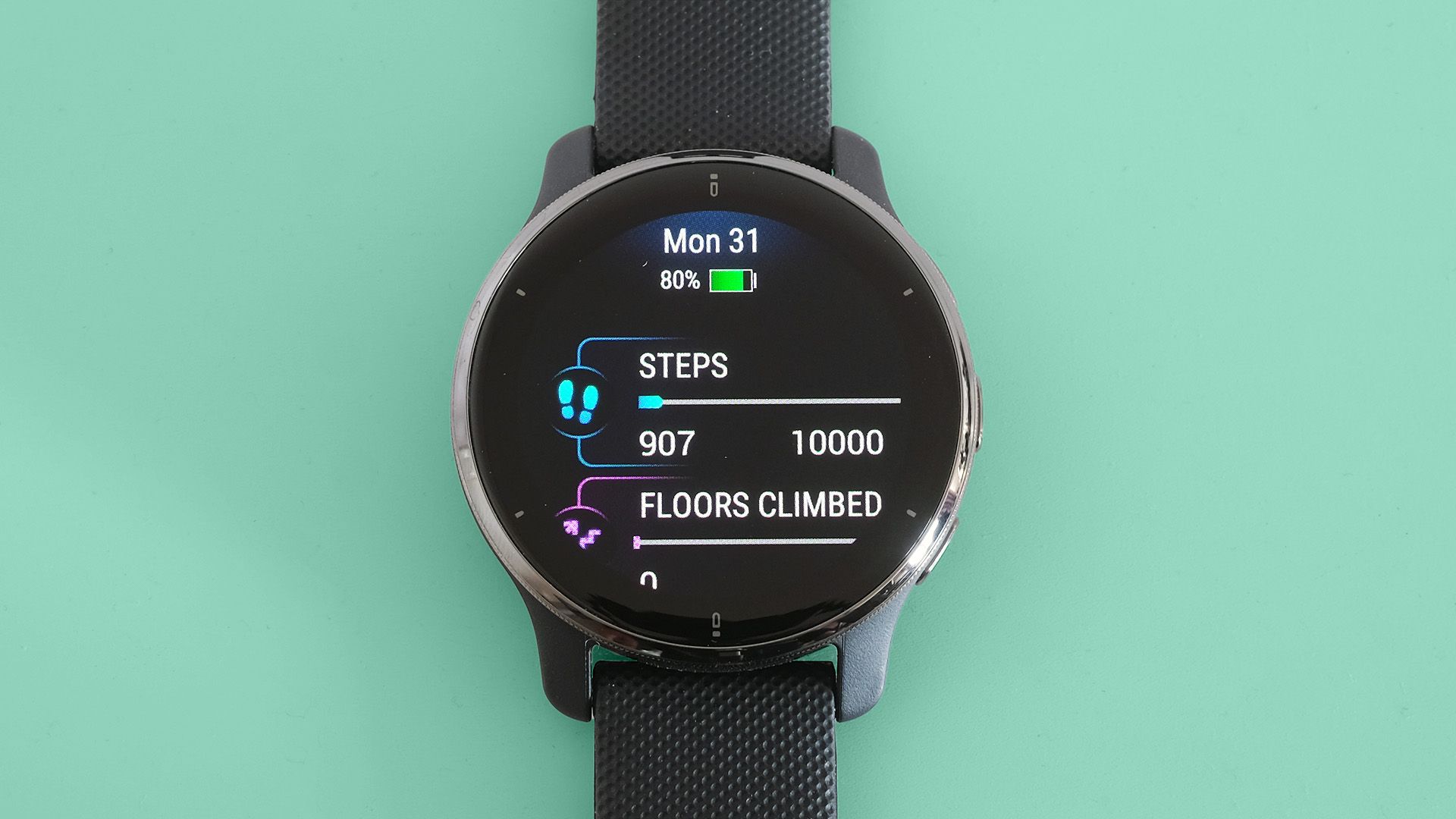Live Science Verdict
The Venu 2 Plus gives Garmin’s class-leading fitness software a friendly face, and adds smartwatch features to the original Venu 2 blueprint.
Pros
- +
Great fitness tracking
- +
Long battery life
- +
Ambitious new smart features
Cons
- -
Digital assistant interactions are clumsy
- -
A few notable bugs at launch
Why you can trust Live Science
The Garmin Venu 2 Plus is a tweaked version of the original Venu 2. Garmin has added a speaker and microphone and altered the design a little. Those two add-ons allow for voice assistant support, watch-based audio feedback and music playback on the watch itself.
It’s a neat little sports and running watch, even though it’s not perfect. The new features aren’t executed flawlessly and it’s not quite as slick as something like an Apple Watch. But if you’re after a wearable that works as both a smartwatch and a fitness tracker, this could be a good option.
It’s worth noting that the Venu 2 and the Venu 2 Plus are fairly similar. If you’re using them purely to track workouts – and you’re not interested in the smartwatch features – then they’re each other's equals.
Design and display

- Sleeker design than older base model
- Durable build
- Bright, 416 x 416 pixel OLED screen
The Garmin Venu 2 Plus has the same 1.3-inch OLED screen as the 45mm Venu 2, but it has a smaller diameter of 43mm (43.6mm to be exact). It looks more refined than its predecessor, with a greater screen-to-surface ratio and a slicker bezel. It’s also lightweight and incredibly comfortable to wear, unlike Garmin’s chunkier watches.
Its design is tough too. The screen covering is made from Gorilla Glass 3. Its back and display surround are made from steel and sandwiched between a frame of toughened plastic. The bezel also has a hardy PVD coating.
These are similar materials to those used in more expensive watches – but it’s not the most durable design we’ve seen from Garmin. There’s no lip over the screen to protect the glass and Gorilla Glass 3 is older than the Gorilla Glass DX, which is used in the base of Fenix 7.
There’s nothing new in the Garmin Venu 2 Plus’s display tech. It’s a sharp, bright and bold 416 x 416 pixel OLED screen with a far punchier look and much higher resolution than Garmin’s transflective displays.
It is bright enough to look clear on super-sunny days. However, there is a sacrifice involved. We find the Garmin Venu 2 Plus the most enjoyable to use in its “always on” screen mode, where the watch face is displayed all day. This reduces battery life massively from well over a week to around 3-4 days.
Features

- Fewer health tracking features than Garmin’s top-end models
- Good music support
- Voice assistant support has limitations
The Garmin Venu 2 Plus has a slightly lighter approach to data than top-end models like the Epix and Fenix 7. Your workout routine isn’t analyzed to show whether you’re making progress, potentially overtraining or letting things slip – all features we’ve come to expect from top-end Garmin watches.
There are still some stats that weave together to give you a sense of week-to-week continuity. Garmin tallies up your “Intensity Minutes” and the Body Battery feature pits the quality of your sleep against exercise and stress to estimate if you might be driving yourself too hard. It can also hook up to a Bluetooth/ANT+ heart rate trackers or bike cadence sensors.
You do need to take on-board some of the features missing here. The Garmin Venu 2 Plus does not have on-watch maps, which are still reserved for the company’s most expensive models.
It has decent sleep tracking, relayed nicely on the watch’s own screen. We found that it wasn’t entirely reliable, as it often recorded sleeping sessions when they weren’t happening. But we’ve yet to find a wearable that’s entirely accurate in this.
We like how Garmin displays its sleep data, though: a quick-look chart of sleep zones, a score out of a hundred and a one-sentence summary. These take a couple of seconds to read, and its appraisals have been largely accurate even if some of the stats can be off.
The Garmin Venu 2 Plus has decent music support too. You can drag over your own files to the watch when you plug it into the computer, and there’s around 6.5GB of space to play with. Spotify, Deezer and Amazon Music are all supported.
With other Garmin watches you can’t play anything until you connect a pair of headphones, but the Venu 2 Plus’s speaker lets you play them right on the watch itself. The speaker is quiet and thin though, so you probably won’t want to.

That speaker is useful for playing (optional) alert tones when notifications come in from your phone and to allow for on-watch calls. We were slightly disappointed we couldn't use the Venu 2 Plus to take WhatsApp calls though, as it seems to work for classic phone calls only.
Interactions with the phone assistant are a little underwhelming. You have to long-press the Venu 2 Plus’s middle button to speak to your assistant (Google, Alexa, Siri or Bixby). Any audio response from your phone assistant is played through the watch speaker.
But you won’t see any visual elements – asking Siri to pull up a photo this way will still result in the image showing on your phone screen, which may well be tucked away in a pocket.
As with other Garmin watches at this level, the Venu 2 Plus also supports wireless payments via Garmin Pay. Impressively, Garmin has also managed to maintain the 5ATM water resistance seen in the standard Venu 2, despite the addition of the mic and speaker.
Performance

- Unreliable SpO2 readings
- Good heart rate monitoring
- Real-life battery use is about a week
As with the Fenix 7, the SpO2 monitor on this model throws out unreliable results, which means that you can’t trust its blood oxygen readings. We also found its “floors climbed” data to be way off. On two separate days it recorded 27 and 29 floors respectively. Sure, we went for a run on those days, but we definitely were not climbing mountains.
Other recorded stats were much better. Like the Fenix 7, we found that the Garmin Venu 2 Plus was excellent when it came to heart rate monitoring. This is no surprise as it uses the same Elevate 4 HR array tech. It’s occasionally a little slow to monitor sudden heart rate leaps if you’re doing interval training, but we think it’s relatively reliable for a wrist tracker.
Its resting heart rate figures are solid too. And if you become a little obsessed with heart rate accuracy you can always connect a chest strap using Bluetooth or ANT+. It's one of those neat Garmin benefits.
We have no complaints about GPS accuracy either. It’s fast to triangulate, the connection is solid and the accuracy on-par with Garmin’s higher-end watches.
How about battery life? Garmin says the Venu 2 Plus lasts up to nine days in its smartwatch mode, which means not using GPS to track workouts.
We, of course, did actually track workouts regularly. You can expect the watch to last around a week if you’re tracking an hour’s worth of GPS runs every other day.
A little over an hour of tracked running took five per cent off the battery, which is not too far off Garmin’s claim. Real-world drain is always going to vary based on how much you use the screen, and how bright it needs to go to compensate for ambient light levels.
Verdict
The Venu 2 Plus is a great fitness watch, and is more comfortable to wear for long periods than Garmin’s heavier enthusiast running watches.
New additions for this series, like digital assistant support, make the Venu 2 Plus feel more like a smartwatch than the Venu 2. But it’s wise not to expect too much from these extras as they are not as slick as the rest of the watch – in part due to technical challenges.
If you find the original Venu 2 selling for significantly cheaper, it may be a better buy. That said, we are fans of the design changes in the Plus. The new PVD steel bezel is sleek, and the watch face is a little smaller.
If this isn't for you
The standard Venu 2 and Venu 2S are the most obvious alternatives to the Venu 2 Plus. They lose the speaker and mic, the digital assistant support, but are otherwise just as effective as fitness trackers.
Garmin’s Venu 2 has the same screen specs but is a little larger, with a contoured steel bezel that extends out from the display a little further. Lower cost is the main reason to buy a Venu 2.
The Venu 2S is smaller than either, a good fit for narrower wrists. There’s no massive hit to battery life but as it typically costs the same amount as the Venu 2 it can seem as though you get less watch for your money. The screen is smaller, but it is otherwise just as fully featured as the Venu 2.
Andrew Williams is a freelance journalist based near London. He has written about tech for over a decade, contributing to sites such as WIRED, TechRadar, TrustedReviews, Wareable, Stuff, T3, Pocket-lint and many others. When he's not covering fitness tech, he writes about mobile phones and computing, as well as cameras.
Scientists built largest brain 'connectome' to date by having a lab mouse watch 'The Matrix' and 'Star Wars'
Archaeologists may have discovered the birthplace of Alexander the Great's grandmother
Elusive neutrinos' mass just got halved — and it could mean physicists are close to solving a major cosmic mystery











